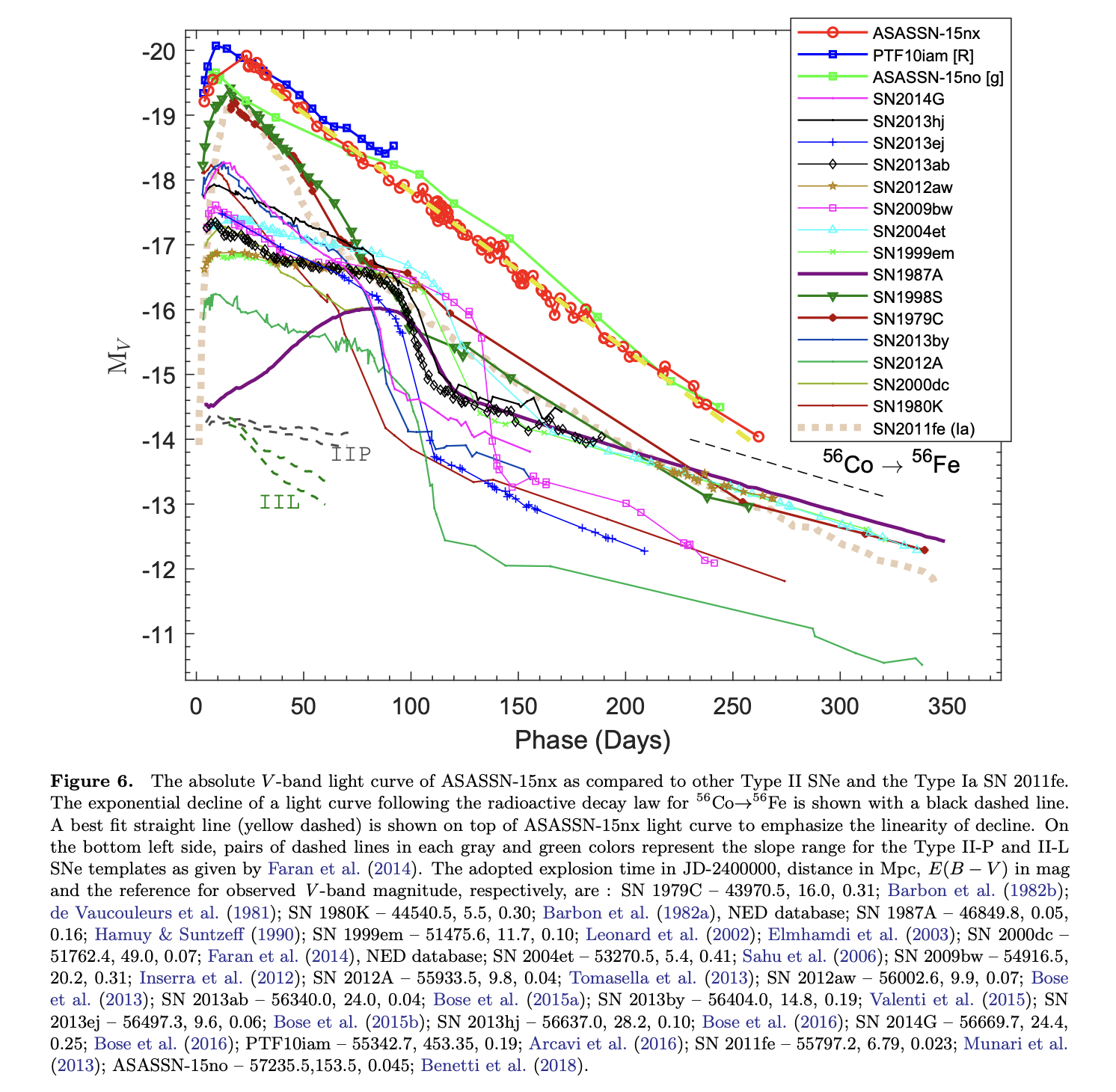Padova-Asiago Supernova Group
Highlights
AT 2017be - a new member of the class of intermediate-luminosity red transients
Cai, Y. Z. et al. 2018, MNRAS 480, 3424 (link to pdf)
We report the results of our spectrophotometric monitoring campaign for AT~2017be in NGC~2537. Its lightcurve reveals a fast rise to an optical maximum, followed by a plateau lasting about 30 days, and finally a fast decline. Its absolute peak magnitude (Mr = -12 mag) is fainter than that of core-collapse supernovae, and is consistent with those of supernova impostors and other Intermediate-Luminosity Optical Transients. The quasi-bolometric lightcurve peaks at 2 x 1040 erg s-1, and the late-time photometry allows us to constrain an ejected 56Ni mass of 8 x 10-4 msun. The spectra of AT2017be show minor evolution over the observational period, a relatively blue continuum showing at early phases, which becomes redder with time. A prominent Halpha emission line always dominates over other Balmer lines. Weak Fe {\sc ii} features, Ca {\sc ii} H&K and the Ca {\sc ii} NIR triplet are also visible, while P-Cygni absorption troughs are found in a high resolution spectrum. In addition, the [Ca~{\sc ii}] 7291,7324 doublet is visible in all spectra. This feature is typical of Intermediate-Luminosity Red Transients (ILRTs), similar to SN~2008S. The relatively shallow archival Spitzer data are not particularly constraining. On the other hand, a non-detection in deeper near-infrared HST images disfavours a massive Luminous Blue Variable eruption as the origin for AT~2017be. As has been suggested for other ILRTs, we propose that AT~2017be is a candidate for a weak electron-capture supernova explosion of a super-asymptotic giant branch star, still embedded in a thick dusty envelope. 185
